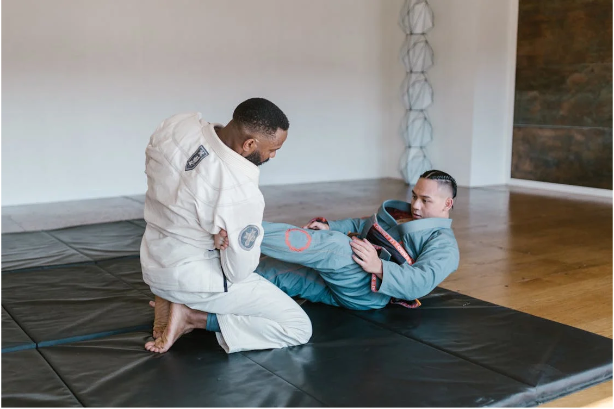Martial arts were among the basic parts of human culture for thousands of years, having become simple techniques of survival for the complex systems of combat and philosophy.
In this article, we will examine the evolution of martial arts from their roots to their existence in the current era, emphasizing how they have altered and grown at different times in history.
THE ANCIENT BEGINNINGS
The ancestry of martial arts can be found in the earliest civilizations of China, India, and Greece. The Yellow Emperor, Huangdi, the protagonist of the Chinese legends, developed fighting techniques as early back as 2698 BC.
Later on, the practice of tai chi and qigong, now referred to as the mainspring of other martial arts disciplines, were the main focus areas.
Impacts of Ancient Civilizations On Modern Society
The ancestors of modern martial arts have been developed by different ancient civilizations due to the fact that they had their own individual combat systems and philosophies.
It was in India that the traditional martial art of Kalaripayattu originated, with complex movements and weaponry practices that influenced kung fu and karate, among others.
In a similar manner, Greek pankration, a combination of boxing and wrestling, demonstrated the importance of unarmed combat skills for warfare.
Philosophical Foundations
A lot of cultures would not just use martial arts as fighting techniques; they would also closely associate the martial arts with spirituality and philosophy. The Japanese samurai stood for Bushido, the warrior’s morality code that means honor and virtuous behavior.
In the same way, Chinese martial arts were combined with yoga and meditation, giving rise to the idea of balance between mind, body, and spirit.
ADAPTATION AND EVOLUTION
The Journey of Martial Arts Across Continents
The ancient Silk Road served as a pivotal bridge connecting the West and East, playing a significant role in the exchange of techniques between Asia and Europe. This path was traversed by warriors, traders, and monks who shared their combat skills and philosophical insights with each other. This exchange led to the fusion of various traditions.
Cultural Integration and Evolution
As martial arts spread across the globe, they absorbed elements of local cultures, becoming uniquely adapted to meet regional needs. For example, in response to a ban on weapons by occupying forces, the people of Okinawa developed karate, a martial art focusing on unarmed techniques.
Similarly, in Brazil, enslaved Africans merged their fighting techniques with native practices, creating Capoeira. To outsiders, Capoeira looks like a dance, but it is actually a complex martial art.
The Medieval Transformation of Combat Practices
During the medieval era, martial arts evolved in parallel with societal changes and the advancement of military technology. The samurai of Japan honed the arts of kenjutsu, the skillful use of the sword, and bushido, the ethical code of the warrior. These practices were rooted in the values of honor, discipline, and loyalty, reflecting the ethos of the time.
Martial Arts in the Modern Age
The 20th century was the time when martial arts took the world to its knees, though a great deal of its popularity was due to film and television. Bruce Lee, a martial artist and actor, made people worldwide acquainted with Chinese martial arts through his movies. Read more on today’s martial arts and popular styles here.
Parallel to this, films like “Karate Kid” and events like the Ultimate Fighting Championship (UFC) have made martial arts popular in the Western world.
Today’s Digital Dojo
The martial arts are one of the most famous professional sports all over the globe. It is now a global practice with a diverse audience who appreciate the physical, mental, and spiritual benefits and integrate them into their lives.
Online sites and social media have made it possible for artists to exchange strategies, stories, and inspiration. Facebook cover templates are also available from VistaCreate, which can be used to promote local events or tell a story about a martial arts journey.
The website’s tool is used to create attractive covers, which makes it easier to attract other martial arts enthusiasts.
Technology development has also had an impact on martial arts development, which enables practitioners to access training sources, connect with communities, and perform performance analysis. From online tutorials and virtual training platforms to wearable gadgets and biomechanics studying tools, technology is still the driving force behind the way they are taught, practiced, and studied.
Conclusion
The evolution of martial arts from primitive practices to modern-day is proof of their undying essence and adaptability. Interest in self-defense is as high as ever, in fact.
Martial arts will have a long way to go with further developments. While innovation is welcome, on the other hand, there is also a strong movement that preserves traditional ones.
These combat sports will remain a powerful tool for physical health, personal development, and cultural exchange. Whether in the dojo, on the screen, or through social media, martial arts will undoubtedly continue to inspire and evolve for generations to come.
